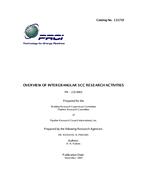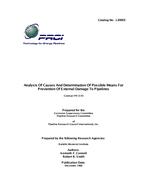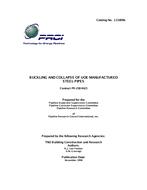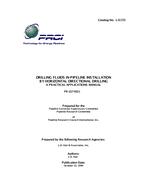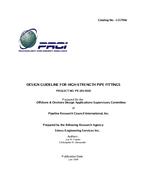Provide PDF Format
PRCI PR-232-9401
- Overview of Intergranular SCC Research Activities
- Report / Survey by Pipeline Research Council International, 11/01/1994
- Publisher: PRCI
$198.00$395.00
L51719e
Dr. Redvers N. Parkins
Need: While much has been learned in the last 25 years of the mechanism and controlling parameters in the stress corrosion cracking of pipelines, remaining gaps in knowledge of the problem are indicated. The very early years of investigations following
the recognition of the problem were concentrated on gathering field data and that was followed by about 20 years of research, largely carried out in laboratories, aimed at obtaining an understanding of the causes of pipelines stress corrosion cracking. While there remain matters that could be studied by laboratory-based research, there appears to be a stronger case for returning to field-based studies, with help in defining such from the increased understanding that has been developed since the early field studies.
Benefit: Gives an overview on the past 25 years of research concerned with the phenomenon of stress corrosion cracking (SCC) in high-pressure gas pipelines. But rather than review the various research programs in chronological order, the author proceeds with his review, after a brief historical introduction, in terms of the parameters that sequentially control SCC; the parameters being chemical environment, electro-potential, stress state (especially the influence of stress cycle) and pipeline steel susceptibility. Each parameter is treated as a "chapter" and then the current state of knowledge for that parameter is summarized at the end of the chapter. The impact that some parameters could have on the ability to accurately model SCC in pipelines is explored and approaches to control of SCC are given in the final summary and recommendations.
Result: The checks and balances on modeling, which has now reached the more immediate goals, will need to derive from field data, yet much of the latter required for that purpose is not available. Some of that data could be derived from appropriate investigation of leaks and hydrostatic retest failures, and since hydrostatic retesting will remain as an important tool in reducing the incidence of service failures until anon-destructive method of detecting cracks is available, there should be ample opportunity for gathering the necessary data. That would provide considerable help in the development of a management protocol for control of the problem, as would revisiting matters such as soil characteristics in the vicinity of joints that develop cracks.
Dr. Redvers N. Parkins
Need: While much has been learned in the last 25 years of the mechanism and controlling parameters in the stress corrosion cracking of pipelines, remaining gaps in knowledge of the problem are indicated. The very early years of investigations following
the recognition of the problem were concentrated on gathering field data and that was followed by about 20 years of research, largely carried out in laboratories, aimed at obtaining an understanding of the causes of pipelines stress corrosion cracking. While there remain matters that could be studied by laboratory-based research, there appears to be a stronger case for returning to field-based studies, with help in defining such from the increased understanding that has been developed since the early field studies.
Benefit: Gives an overview on the past 25 years of research concerned with the phenomenon of stress corrosion cracking (SCC) in high-pressure gas pipelines. But rather than review the various research programs in chronological order, the author proceeds with his review, after a brief historical introduction, in terms of the parameters that sequentially control SCC; the parameters being chemical environment, electro-potential, stress state (especially the influence of stress cycle) and pipeline steel susceptibility. Each parameter is treated as a "chapter" and then the current state of knowledge for that parameter is summarized at the end of the chapter. The impact that some parameters could have on the ability to accurately model SCC in pipelines is explored and approaches to control of SCC are given in the final summary and recommendations.
Result: The checks and balances on modeling, which has now reached the more immediate goals, will need to derive from field data, yet much of the latter required for that purpose is not available. Some of that data could be derived from appropriate investigation of leaks and hydrostatic retest failures, and since hydrostatic retesting will remain as an important tool in reducing the incidence of service failures until anon-destructive method of detecting cracks is available, there should be ample opportunity for gathering the necessary data. That would provide considerable help in the development of a management protocol for control of the problem, as would revisiting matters such as soil characteristics in the vicinity of joints that develop cracks.
Related Products
PRCI PR-3-45
Analysis of Causes and Determination of Possible Means for Prevention of External Damage to Pipeline..
$48.00 $95.00
PRCI PR-227-9321
Drilling Fluids in Pipeline Installation by Horizontal Directional Drilling..
$198.00 $395.00

